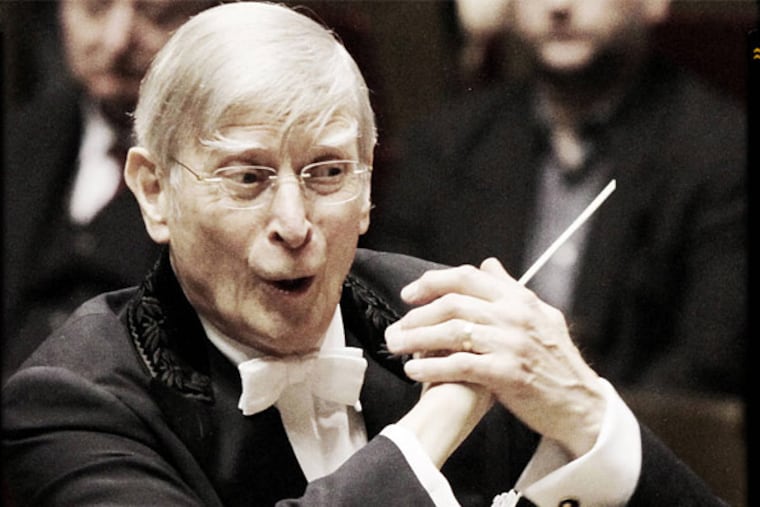Blomstedt leads cheers for Philadelphia Orchestra oboes, and conducts a rare Mendelssohn beauty
Youth was at the keyboard for Mendelssohn’s "Piano Concerto No. 2 in D Minor," with Lise de la Salle as soloist.

The first thing Herbert Blomstedt did after the Berlioz ended in a blaze was to walk over to the oboes and lead a round of cheers. It might have happened after any performance of the Symphonie fantastique. It’s a big oboe piece, after all.
Thursday night, though, the conductor’s gesture carried extra significance. The Philadelphia Orchestra has just signed French oboist Philippe Tondre to the post of principal oboist; he starts in Philadelphia this fall.
But the orchestra’s indigenous double-reed bench is deep. Until Tondre’s arrival, associate principal oboist Peter Smith has been given the title of acting principal, and in the pastoral start of the Berlioz’s third movement, he and English horn player Elizabeth Starr Masoudnia were superb.
Smith at his best has a transparent and malleable concept of sound, a sensitive quality that gives direction and meaning to the music. Masoudnia adheres to this philosophy, too, and on this night her coloring was as pungent as it was sure. Whatever else shifts in this section next season, listeners should not lose sight of what we have already. The bar is high.
So are the standards on the podium. Blomstedt had a pocket edition of the score in front of him, though he never cracked it open. Everyone knows this piece; the inventive exploitation of innovative, slightly hallucinatory effects has musicians honing excerpts from an early age.
Performance tradition brings risk of a stunted imagination, but Blomstedt struck a convincing balance between the expected and the novel.
There was nothing radical in his interpretation. Tempos were mid-range. But consider the “Daydreams, Passions” and “Ball” movements. The sonorities were rounded and the ensemble crisp. With Cheryl Losey Feder and Helen Gerhold in the harp chairs, the waltz sparkled.
Blomstedt made little changes in articulation that completely altered the spin of certain phrases — like the big brass pronouncement in the “March to the Scaffold,” here made more inevitability inching toward the rolling of the head.
Everything Blomstedt did promoted a certain ensemble confidence that makes you wish for more visits from him well beyond his current 92 years.
Youth was at the keyboard for Mendelssohn’s Piano Concerto No. 2 in D Minor with Lise de la Salle as soloist. The French pianist is 31 (Mendelssohn was even younger when he wrote the piece), and for her encore she chose the “Dance of the Beautiful Maiden” from Ginastera’s Danzas Argentinas.
The Mendelssohn is rare in these parts. The orchestra has programmed it only once before, in 1958 (Rudolf Serkin was soloist). But even if it was new territory for the orchestra, it is classic Mendelssohn — peril, peace, and bursting joy, in that order — and perfectly suited to the ensemble’s characteristics.
The second movement was strongest, for the orchestra, conductor, and pianist. Blomstedt put down a tempo perched nicely between expressivity and momentum. The string sound glowed.
Each artist took a role in a particularly breathtaking sequence two-thirds of the way through the movement (and for which Verizon Hall was an excellent means of conveyance).
It went like this: De la Salle’s beautifully shaped legato in the climactic statement of the main theme, the winds floating notes grouped in buoyant sixes, and then a great peace.
Additional performances Friday at 2 p.m. and Saturday at 8 p.m. in Verizon Hall, Broad and Spruce Streets. Tickets are $10-$164. 215-893-1999, philorch.org